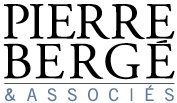Lot n° 23
Estimation :
15000 - 20000
EUR
BLANQUART-EVRART, Louis-Désiré
Photography, its origins, its progress, its transformations. Lille, printed by L. Danel, 1869. In-4 (310 x 235 mm) of 2 ff.n.ch., 61 pp. 14 plates out of text by various photographic processes. Green half-chagrin, percaline boards decorated with a quadruple gilt fillet, gilt title to the board, spine ribbed, printed cover preserved (period binding signed Lisboa & Companhia).
Photography, its origins, its transformations is considered a fundamental work for the history of the first three decades of photography.
Illustrated with contemporary examples collected by the author, it contains a discussion on the genesis of photomechanical printing and photo-typographic illustration. This is the first work on these new methods that led to letterpress printing with the same quality as photographic printing.
Blanquart-Evrard clearly understood that ink-based imagery would eventually completely replace silver-based printing.
The copy is illustrated with the following photographic plates: 1. Phototype of Egypt printed in Lille in 1852 for Maxime du Camp's work on Egypt, Nubia, Palestine and Syria, pages 26/27.
2. Photolithography in Poitevin's method, pages 32-33.
3. Wellington's engraving (Zurcher's photo-lithographic method), pages 40-41.
4. A historical illustration of Gavarni's work (also Zurcher's lithographic photo method), pages 40-41.
5. La Grande Soeur (Goupil's method) pages 42-43.
6. View of the Galerie des Beaux-Arts (photogravure of nature.
H. Garnier's method), pages 42-43.
7. La Force (Heliogravure. Method of Baldus), pages 42-43.
8. Etienne Falconet's reception piece (in another Baldus method), pages 42-43.
9. Facsimile of a manuscript document, pages 42-43.
10. View of the Baptistry of Louis XIII, relief photogravure, by
Dujardin Frères (method of H. Garnier), pages 42-43.
11. Ceiling of the Louvre, idem, relief photogravure by Dujardin
Frères (H. Garnier method), pages 44-45.
12. Portrait d'après nature (Photograph of a girl. Carbon method
Ernest Edwards), pages 46-47.
13. The Virgin and Child (Adolf Braun method; pages 48-49).
14. A Fripier printed by Goupil (Woodbury Method); pages 50-51.
Each copy has been assembled with the available impressions, as a result they differ from one to the other.
Important Provenances.
This copy bears two very important mailings at the top of the title: the first (in the upper right-hand corner) is addressed to Alphonse
Davanne, founding member and president of the French Photographic Society from 1876 to 1901: "à Monsieur Davanne hommage affectueux". Davanne, in turn, presented this copy to the Portuguese photographer Carlos Relvas, inscribing it "To Mr.
Carlos Relvas in Golegã (Portugal) from Mr. Davanne".
Louis Désiré Blanquart-Évrard was born in Lille in 1802. In 1826, he studied with Frédéric Kuhlmann, an important chemist, then developed his photographic work from 1844 onwards following the announcement of the negative-positive method of William Fox Talbot. He published a summary of Talbot's work on developing and improving his method.
He concentrated on adapting photography to industrial production and creating a photographic printing factory.
He founded his "Imprimerie Photographique" in 1851 in Loos-lès-Lille, the first of its kind in France. A major figure in the development of photography in the second half of the 19th century, Blanquart-Evrard devoted the rest of his life to research.
Louis Alphonse Davanne (1824-1912) was a French chemist, teacher, inventor and early photographer, co-founder of the French Photographic Society in 1854 and, above all, the creator of the mass production of albumen photography processes.
Along with Édouard Baldus, Roger Fenton and Henri Le Secq, he was one of the pioneers of the photolithographic process, otherwise known as photogravure. He taught at the Sorbonne and contributed to the popularization of photographic techniques.
Carlos Relvas (1838-1894) has been a member of the French Photographic Society since 1869 and was one of the most prestigious photographers of his time in Europe. An eclectic man, Relvas produced a large body of work. He was also a politician, inventor, farmer, horse and bull breeder, and musician. His work has been awarded in international exhibitions in Madrid, Paris, Brussels, Amsterdam, Vienna and Philadelphia, among others. His House/Studio, (Casa-Estúdio Carlos
Relvas), whose construction began in 1872 and was completed three years later, is absolutely original in European terms, both from the decorative and structural points of view of the new architecture
My orders
Sale information
Sales conditions
Return to catalogue

